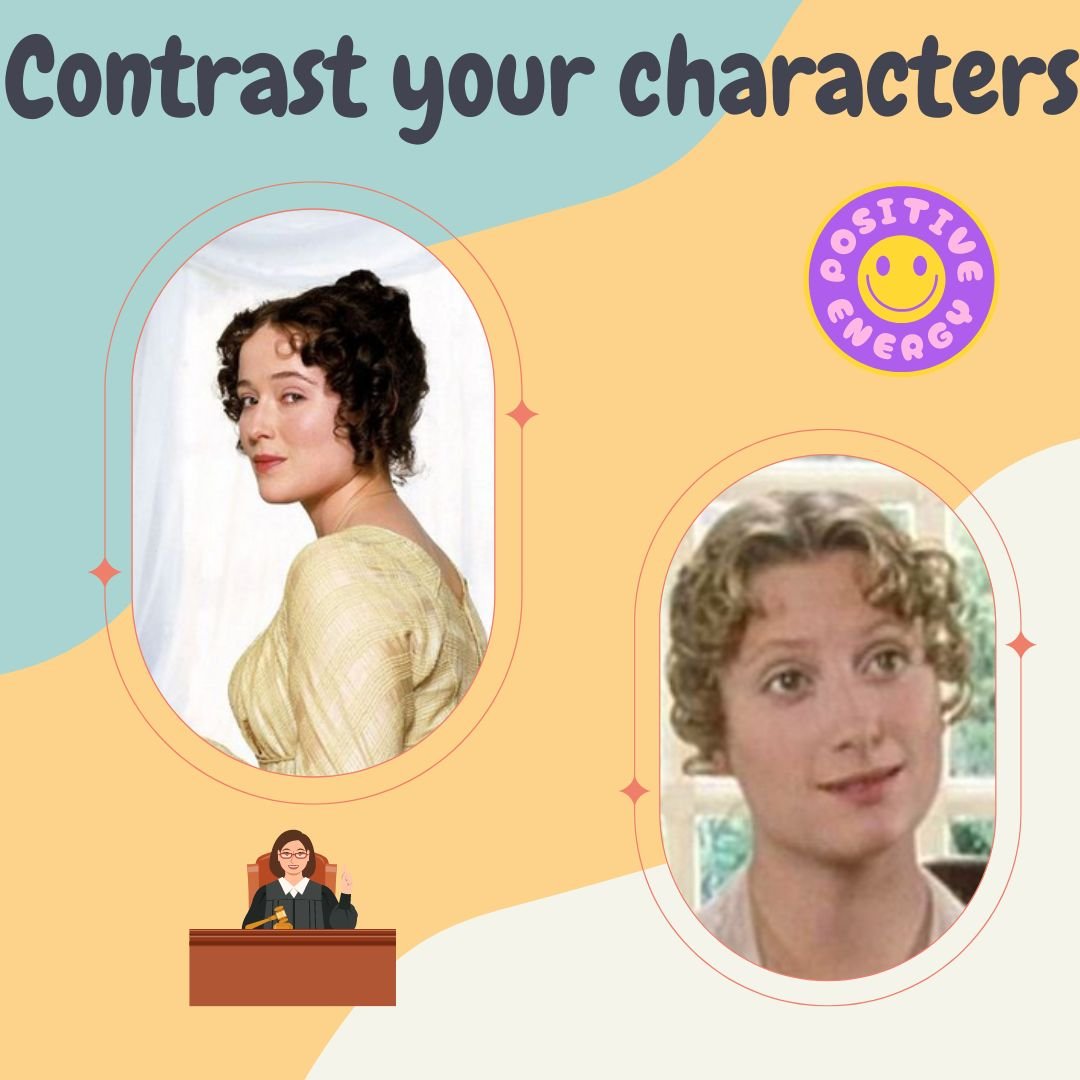Austen creates characters with contrasting opinions, personalities, and values.
This provides her with so many opportunities to show rather than tell and to forward her subplots. She uses this strategy frequently throughout Pride and Prejudice (and all of her books) to excellent effect.
Creating opposing personalities
Elizabeth is quick to judge people, she expects negative character traits, and she’s very confident in her accuracy.
Jane believes the best in people, and if a negative character trait does appear, she looks for extenuating circumstances to explain it away.
Elizabeth: “Oh! you are a great deal too apt, you know, to like people in general. You never see a fault in anybody. All the world are good and agreeable in your eyes. I never heard you speak ill of a human being in your life.”
Jane: “I would not wish to be hasty in censuring anyone; but I always speak what I think.”
Contrast your characters and …
Within one scene, you can compare two characters’ actions and behavior which provides an excellent opportunity to show their personalities. This is particularly useful if you’re introducing your characters for the first time.
Two characters (even best friends) may disagree on a topic, and by each discussing their point of view, you can create conflict and tension and subtly push forward a subplot.
You can have two characters witness the same event - and each can come to very different conclusions. As the author, you can ensure one is right and the other wrong, which can be very effective in creating or seeding future obstacles.

